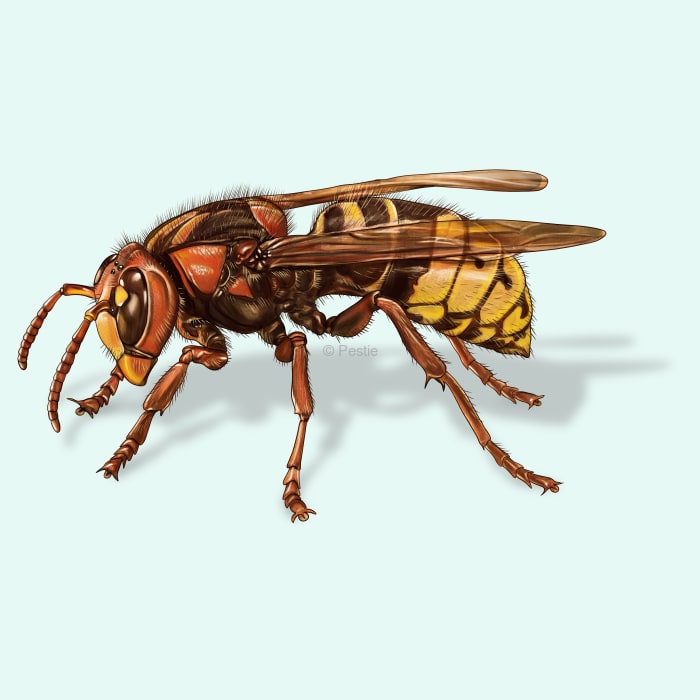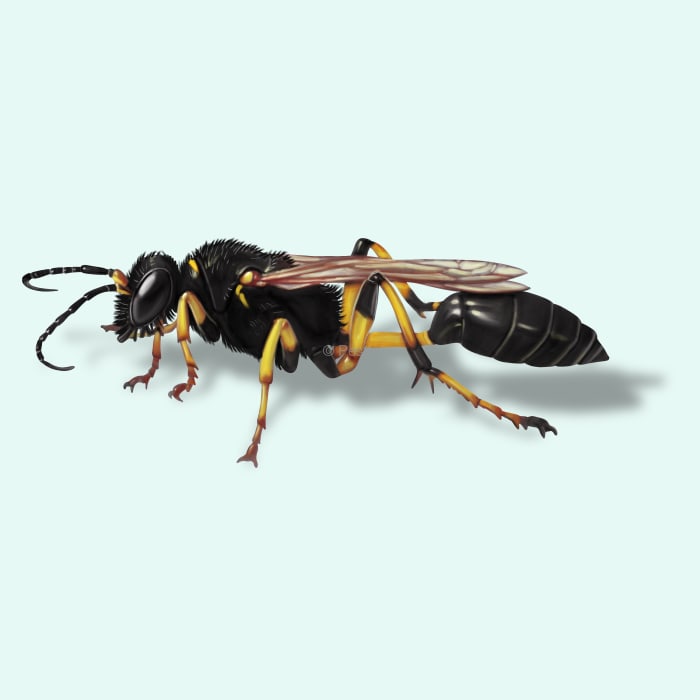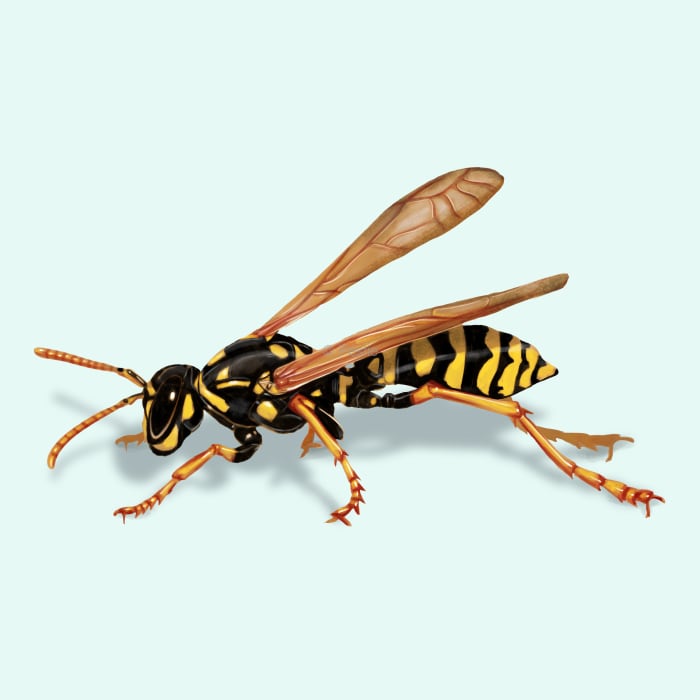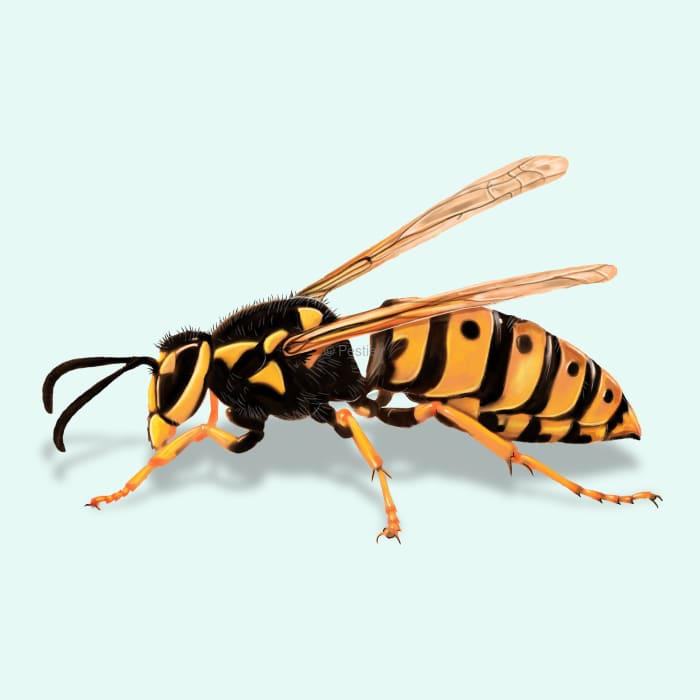How to identify and get rid of wasps
From nuisance to threat: the real deal on wasp pests
How can something so small invoke so much fear in a grown person? Well, wasps have a way of showing everyone who's boss. These winged pests, known for their sharp stings and aggressive behavior, are more than just a summer nuisance. From disrupting outdoor activities to posing significant health risks, wasps are a force to be reckoned with.
But even with their bad reputation, not all wasps are out to get you or set on revenge for treading through their territory. Wasps play an essential role in our ecosystems and even take care of household and garden pests for us. However, when it comes to the safety and comfort of family, friends, and pets, sometimes wasps have to go!
How to identify wasps
Wasps come in all sizes and colors, and with more than 4000 species in the US alone, it can be difficult even for experts to identify them all. A majority of wasps go unseen, not bothering anyone or their property. These tiny wasps lay their eggs in other insects or invertebrates and help control common pests.
There are some bigger wasps that we need to be careful around, and knowing the difference between a wasp and another insect can be important. Unlike bumblebees and honeybees, wasps are generally smooth and hairless. Like all insects, they will have three body segments (head, thorax, and abdomen) and six legs. Wasps also have two pairs of wings.
A distinct feature of wasps is their narrow waist from the thorax to the abdomen. Additionally, the most commonly observed wasps will have a stinger that can deliver a painful sting when disturbed. Only females have a stinger, used for laying eggs and subduing prey. Unlike bees, wasps have a smooth stinger that can sting you multiple times and won't come out after the sting.
Wasps are also known for creating elaborate nests. You can often identify the wasp based on the materials and structure of the nest. Some nests are built higher up on manmade structures or trees, and others are made under the ground. Some wasps use mud or a paper-like material to create their nests, and others use rodents' abandoned holes.
To know if you have a wasp infestation, be on the lookout for more wasps in the area than usual and look for nests under eaves, rooflines, sheds, or near covered entryways.
Are wasps dangerous?
Yes, wasps can be very dangerous under the right circumstances. Fifty to a hundred people die each year due to insect stings. Since wasps can still multiple times and some will continue to pursue you even after you leave their nest area, this can increase the likelihood of an allergic reaction and anaphylactic shock.
How to treat a wasp sting
Wasp stings can cause reactions similar to bee stings, and anyone allergic to bee stings should be cautious around wasps.
- If you have been stung by a wasp, the first thing to do is wash the area with soap and water.
- Add an ice pack wrapped in a cloth to reduce the swelling. Keep it on for 10 minutes, then take it off for 10 minutes.
- If the sting is near the neck or head, carefully monitor for swelling that causes breathing difficulties. If swelling doesn't stop or breathing is restricted, call 911 and seek medical treatment immediately.
- Once the swelling stops, the sting will likely be tender and itch. Apply a paste of baking soda and water to the sting.
- Apply antihistamine, corticosteroid cream, or calamine lotion if the sting still itches.
- Additionally, take acetaminophen if the pain is especially painful or still swollen.
Fun fact
Research has found that wasps can recognize the faces of their nestmates. They can tell if a wasp is an intruder or fellow sister by the markings on their face.
What do wasps eat?
Different species of wasps have different diets and preferences. Paper wasps are known for capturing caterpillars, flies, and beetle larvae and drinking nectar. Mud daubers will sting and collect spiders, storing them in mud tubes for their larvae to eat. Yellow jackets will seek sugary and carb-rich foods, like plant nectar and fruit. They will also eat high-protein foods like other insects and sometimes raw meat.
How to get rid of wasps
To prevent wasps from settling in or near your property, you must eliminate anything that might attract them. This can include:
- Uncovered garbage or trash
- Sugary foods
- Sweet-smelling flowers
- Hummingbird feeders
You'll also want to seal any entryways into your home so wandering wasps don't accidentally make it inside. Repair window and door screens and check for holes in soffits or ventilation lines.
One of the best ways to eliminate wasps around your home is to eliminate their nest. This can be tricky depending on the type of wasp you are dealing with.
With mud daubers and paper wasps, wait until nightfall and knock the nest into a bucket of soapy water. It's best to eliminate the nest while it is still small. If you don't feel comfortable getting rid of the nest on your own, contact a professional for assistance.
The most effective way to get rid of wasps is spraying and maintaining a bug-barrier with a great product such as Pestie. This will not only get rid of those pests initially, but will also prevent future nest from getting established around your property. Again, if you don't feel comfortable with this or are allergic to wasp stings, it may be better to call a professional for help.
Treat wasps with Pestie
If you're still having trouble keeping wasps away, the best option is to use a pro-grade, effective pest control solution like Pestie.
Pestie is a do-it-yourself pest control solution that's specially designed to keep wasps and other pests away from your home.
With Pestie, you can rest easy knowing that your living space is protected and free of creepy crawlies. And the best part? It's designed for people, pets, and the planet, so you can say goodbye to harsh chemicals and hello to peace of mind!
- Save hundreds compared to traditional annual pest plans
- People, pet, and planet-friendly
- Pro-grade customized formulas













